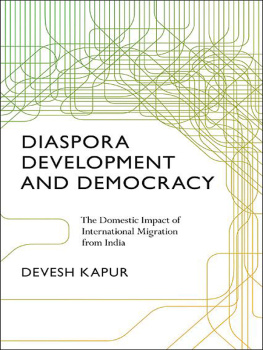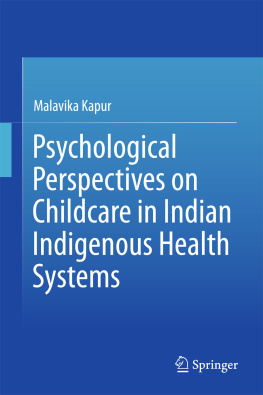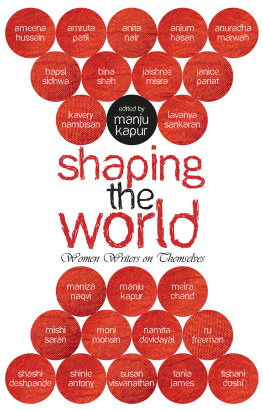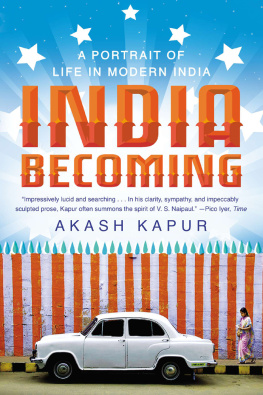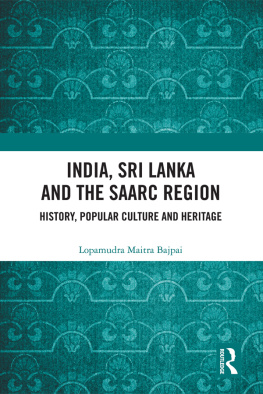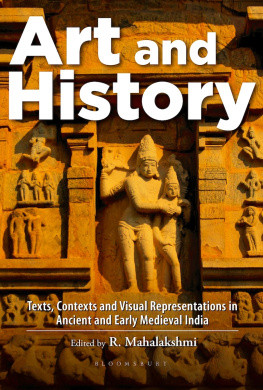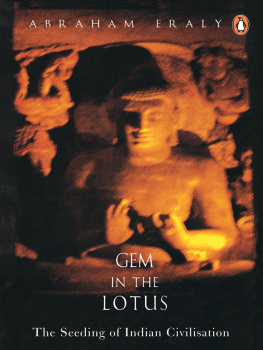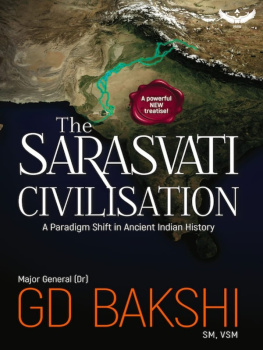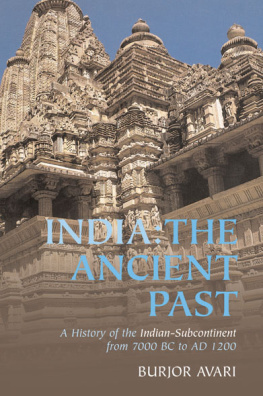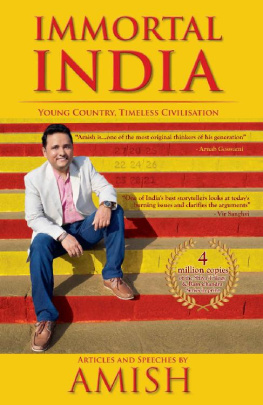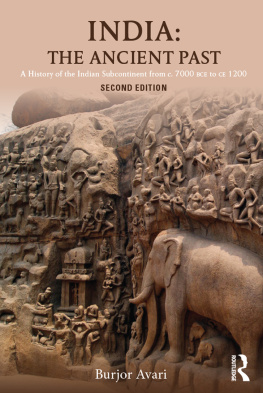EndorsementsIt is with a deep sense of privilege that I write a few lines about this monumental book by Mrs. Kamlesh Kapur, whom I came across for the first time at one of the WAVES conferences about ten years ago. As an eminent educationist who has contributed to the academic world and to the training of generations of students, Ms Kamlesh Kapur is well qualified to write a textbook for high school students. There has been a momentous shift of paradigms regarding the historical view of ancient Indian civilization brought about by new archaeological, geological and more recently by genetic findings of the last two or three decades. Kamlesh Kapur has filtered the material from primary sources, research papers and monographs and has presented the material in a very lucid and engaging style in a text suitable for high school students. She has dropped the myths and assumptions about the history of Indian Civilization taught for the last couple of centuries, has reclaimed an accurate chronology of Ancient Indian History, all the while making it interesting. An outstanding job by any measure! I wish her all success.
The University of Memphis B. N. Narahari Achar Memphis, TN 38152, U.S.A. Professor of Physics January 10, 2010
Portraits of a Nation History of Ancient India is a timely book. Recent archaeological findings, scientific analysis and reconstruction of the movements of ancient people using DNA studies have shown that the assumptions on which ancient India and her civilization were studied in school textbooks for several decades were incorrect. Kamlesh Kapurs pioneering book brings together latest scholarly findings to provide a rational understanding of Indian civilization. I recommend it strongly for use in schools and for self-study.
Oklahoma State University,
Subhash Kak, and co-author of In Search for the Cradle of Civilization
India being the oldest living civilization today, and Indian diaspora increasing dramatically in the United States, a need for an authentic book with accurate and contextualized information has long existed. Portraits of a Nation History of Ancient India is a very timely book that meets that need.
University of Massachusetts Dartmouth 285 Old Westport Road
Dartmouth, MA 02747
Bal Ram Singh, Ph.D. Director, Center for Indic Studies
Kamlesh Kapur
STERLING PUBLISHERS PRIVATE LIMITEDSTERLING PUBLISHERS PRIVATE LIMITED A-59, Okhla Industrial Area, Phase-II,
New Delhi-110020
Tel: 26387070, 26386209; Fax: 91-11-26383788 E-mail: mail@sterlingpublishers.com
www.sterlingpublishers.com
Portraits of a Nation: History of Ancient India 2010, Kamlesh Kapur
ISBN 978 81 207 5212 2 (HB)
978 81 207 4910 8 (PB)
All rights are reserved. No part of this publication may be reproduced, stored in a retrieval system or transmitted, in any form or by any means, mechanical, photocopying, recording or otherwise, without prior written permission of the original publisher.
Photograph CreditsCover Picture Brihadishvara Temple, Thanjavur, Tamil Nadu Chola Dynasty and all pictures in the book, unless otherwise acknowledged, are contributed by Dr Arjun Kapur .
Printed in India
Printed and Published by Sterling Publishers Pvt. Ltd., New Delhi-110 020.
Dedicated toHema, Keshav and Leela Shah my grandchildren; Archit and Ayana my grand nephew and niece; and millions of students all over the world
looking for facts of historical significance constantly surfacing through excavations, scientific research in many disciplines, and proper translation of Vedic and post-Vedic texts.
Those who forget their histories are condemned condemned to forever be second-class, to forever lack self-respect, to forever suffer loss of self-image.
George Santayana Cowardice asks the question is it safe?
Vanity asks the question is it popular?
Expediency asks the question is it political?
But conscience asks the question is it right?
There comes a time when one must take a position that is neither safe, popular, or political; but because it is right.
Dr. Martin Luther King, Jr.One can also add the following History asks the question is it factual?
The essential purpose of writing a history book is to point out significant facts as they are and to depict these as honestly as one can. This book just does that!
Foreword Y
esterdays are indestructible. They remain subtly present in today and have an inevitable impact on tomorrow. It is this indestructibility of yesterdays that has made history an important discipline all over the world. Being a sizable segment of collective memory and a part and parcel of effective social psyche, history acts as a powerful vehicle of culture and tradition from generation to generation. History shapes and defines the social identity of a people in course of its process. It teaches men lessons to learn from the past. It acts as a source of morale in times of distress. This is why we must learn and teach history. Imparting education of historical knowledge should, therefore, aim at developing positive collective memory and healthy social psyche. In fact, historical knowledge is of use only when it contributes to our wisdom.
Equally worth keeping in mind is the point that pertains to historians. The historians job is akin to that of a judge who judiciously scrutinizes the available evidence before reaching any conclusions. Like a judge, his aim is to further justice and social welfare. He is not expected to behave as an advocate who pleads the case of his client by highlighting facts that are favorable and suppressing facts that are inconvenient.
I am happy to note that Mrs. Kamlesh Kapur has in her mind the above basic considerations about history and historians while writing the present book. And this is something creditable in view of the fact that most of the works on Ancient Indian History lack not only a positive but also a judicious approach to history.
The distortions created in Indian history by biased attitudes and approaches Eurocentric, colonial, missionary, and ideological, etc. are too well-known to be repeated here. Mention may, however, be made of two false notions about Ancient Indian History and historiography perpetuated for over a century and a half.
One relates to the belief that no kind of man originated on the soil of India, all her human inhabitants having arrived originally from other
viii n PORTRAITS OF A NATION : HISTORY OF ANCIENT INDIA
lands. Repeatedly asserted since the nineteenth century, this belief has become an article of faith, not to be doubted or challenged. Even today several scholars vigorously plead that ancestors of all major linguistic groups in India, whether speaking Indo-Aryan, Dravidian, Austro-Asiatic or Tibeto-Burmese, are aliens. Not only that, it is being argued that agriculture (that is, the art of cultivation) of the major crops being grown in the country today has reached here from outside: wheat and barley from the northwest and rice from the east. And all this is being said despite the recent human and non-human genetic researches proving the contrary!
Another equally false notion, created and perpetuated since long, has lead to the general perception that ancient Indians had no sense of history. The epics and the Puranas , in this perception, contain mythology, not history. But, the reality is just the opposite. Ancient Indians had a deep and profound sense of history. They distinguished various literary genres of a graded historical nature like Gaathaa , Naaraashamsi , Aakhyaana , Purana , and Itihaasa , ranging from story to history.
Even otherwise, it is wrong to discard any type of literature as a source of contemporary history. Even a fiction may be a valid source of history. Consider this example: The poet says that The flower is smiling. A trained historian would infer two facts from this purely imaginative statement: one that there is a thing like flower, and the other that there is an action like smiling! Mrs. Kapur is, therefore, perfectly justified in taking the epics, the
Next page 

